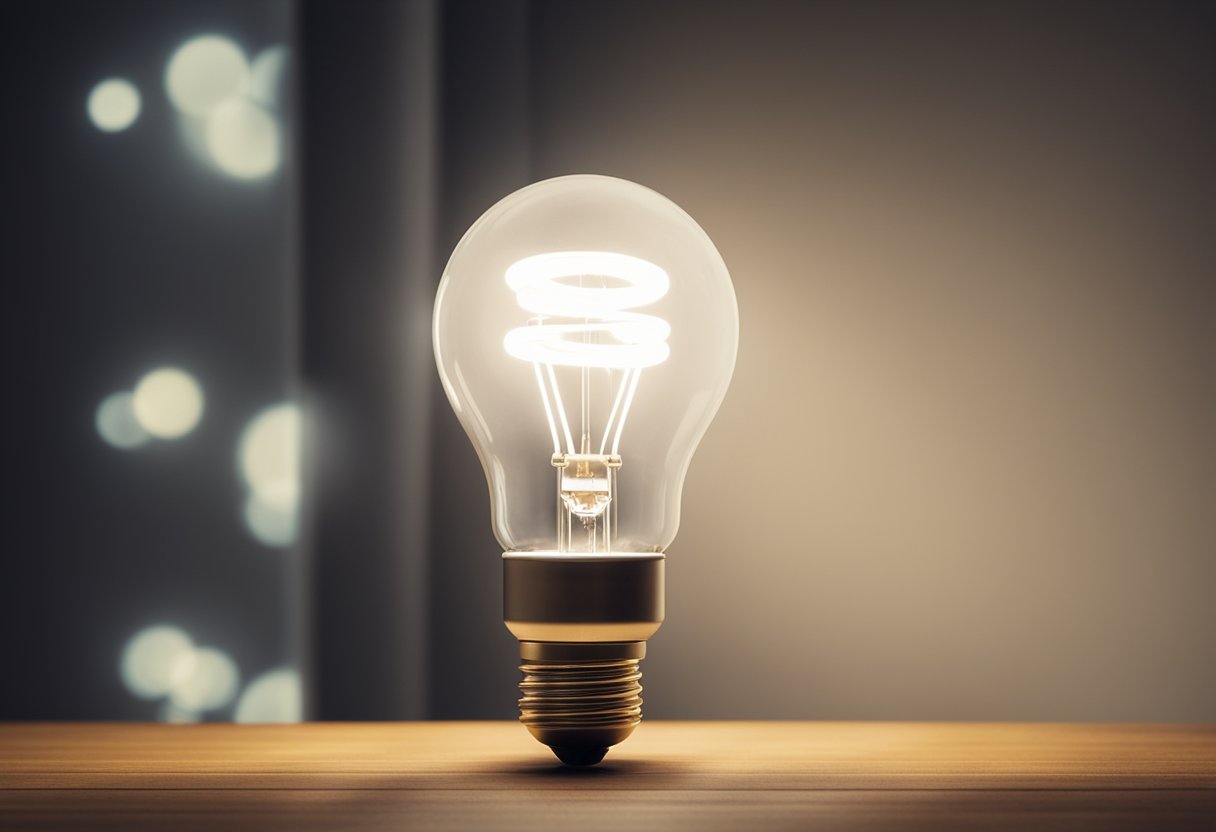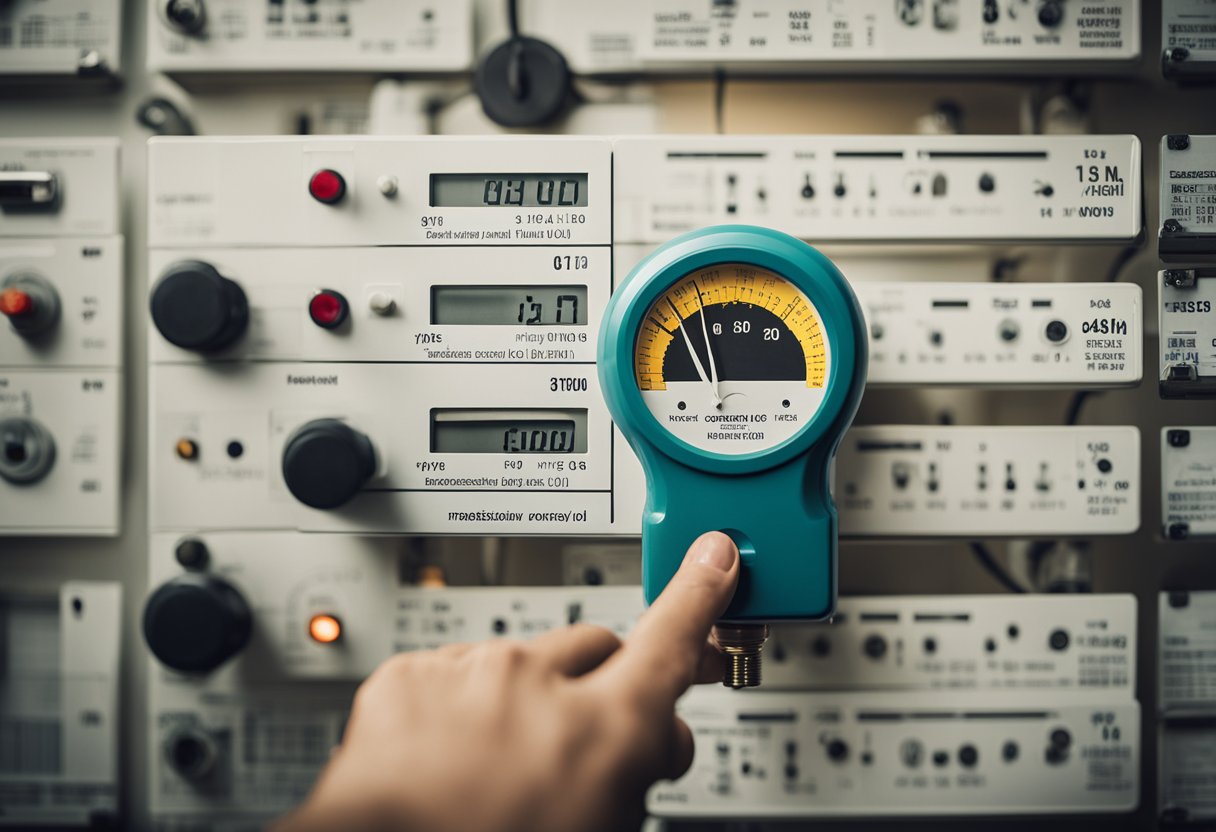Energy efficiency hinges on the principle of utilizing less energy to achieve the same level of service or output. This could pertain to a multitude of activities, from domestic chores like heating and cooling a home to industrial processes that create products for consumption.

In essence, it’s about doing more with less; a concept that is as straightforward as it is critical to our sustainable future. Whether it pertains to lighting our spaces, powering our appliances, or fueling our factories, the objective remains the same: maximize productivity while minimizing energy consumption.
At its core, it is a multifaceted strategy with benefits that cascade beyond simple cost savings. It touches on environmental preservation by reducing the burden on natural resources and minimizing greenhouse gas emissions. For industries and homes alike, this translates to lower energy bills and a diminished environmental footprint, making energy efficiency not just an individual or corporate responsibility but a collective one. The approach to being energy efficient can encompass simple behavioral changes, adoption of energy-saving technologies, and designing spaces and machinery with energy conservation in mind.
Key Takeaways
- Energy efficiency involves using less energy to maintain the same level of service.
- It offers environmental and financial benefits by reducing resource use and energy costs.
- Effective energy efficiency strategies span from behavioral changes to technological advancements.
The Concept of Energy Efficiency

The discussion of energy efficiency revolves around the use of technology and methods to reduce energy consumption while maintaining or enhancing service quality. This section unravels the meaning and evolution of the concept.
Defining Energy Efficiency
Energy efficiency encompasses the deployment of technology or methods that enable individuals or entities to achieve the same level of activity or comfort by consuming a lesser amount of energy. At its core, the principle of energy efficiency is about maximizing the output from a given energy input. The Understand Energy Learning Hub describes it as providing the same or better service using less energy across various energy services such as lighting, heating, and transportation.
Historical Perspective on Energy Efficiency
Historically, advancements in energy efficiency have paralleled modern technological progress, reflecting a continuous effort to do more with less. The concern for energy efficiency has grown from simple improvements like insulating buildings to complex industrial processes and the transition to low-energy lighting solutions. The progress in this domain is a testament to human ingenuity and the drive for sustainability.
Benefits of Energy Efficiency

Energy efficiency reaps various benefits across the environmental, economic, and security spectrums, addressing pressing global concerns holistically.
Environmental Benefits
- Reduction in Greenhouse Gas Emissions: Energy efficiency measures can lead to significant reductions in emissions that contribute to climate change. By using less power, energy-efficient appliances and practices decrease the carbon footprint.
- Conservation of Natural Resources: Less energy use translates into a lower demand for resources such as water and fossil fuels, leading to more sustainable consumption patterns.
Economic Advantages
- Cost Savings: Homeowners and businesses can save money on their energy bills by adopting energy-efficient technologies, such as ENERGY STAR-certified heat pump water heaters, which can cut energy use by 70%.
- Job Creation: Investments in energy-efficient buildings and technologies fuel job growth in manufacturing, installation, and more.
Energy Security and Independence
- Decreased Energy Demand: Improved energy efficiency reduces overall energy demand, easing pressure on the energy grid and lowering vulnerability to energy supply disruptions.
- Strengthened Energy Resilience: By fostering an independent energy infrastructure, countries can minimize their reliance on foreign energy sources and better control their energy futures.
Strategies for Improving

Energy efficiency can be substantially enhanced through a combination of technological advancements, behavioral adjustments, and stringent policies and regulations. Together, these strategies form a comprehensive approach toward a more energy-efficient future.
Technological Innovations
Technological innovations play a crucial role in energy efficiency. Energy-efficient appliances, such as HVAC systems and water heaters, significantly reduce energy consumption. For instance, LED lighting uses up to 90% less power than incandescent bulbs, leading to substantial energy savings. In manufacturing, the deployment of smart systems and energy-efficient machinery can lower energy usage and increase productivity.
Behavioral Changes
Individual and organizational behavioral changes are imperative for improving efficiency. Simple acts like turning off lights when not in use or optimizing the use of programmable thermostats can lead to considerable energy savings. The International Energy Agency highlights that higher energy costs have steered consumers and governments towards better energy management practices.
Policy and Regulation
Policy and regulation are the backbone of contributing to energy efficiency improvements. Building codes, and vehicle and appliance efficiency standards are tools that governments use to eliminate the least efficient models from production. Furthermore, incentivizing energy-efficient designs and renewable integration by providing subsidies or tax credits can accelerate the transition to more efficient key economies, as discussed by organizations like the Department of Energy.
Measuring and Assessing

To truly understand the impact and effectiveness of energy efficiency initiatives, one must employ accurate measurement and assessment methods. These methods not only account for direct energy savings but also help in crafting better efficiency policies and programs.
Energy Intensity Metrics
Energy intensity metrics quantify the amount of energy consumption relative to a specific metric, such as output or space. For example, a common energy intensity metric is BTUs per square foot, which is particularly relevant for measuring the energy efficiency of buildings. The Guidebook for Energy Efficiency Evaluation, Measurement, and Verification functions as an essential resource in understanding these metrics in depth.
Performance Standards
Performance standards set specific energy use requirements that products, appliances, or buildings must meet. These are crucial in pushing the market towards higher efficiency by establishing a minimum acceptable level of energy performance. For instance, ENERGY STAR-certified products have met rigorous energy performance standards set by the EPA and provide a clear indication of high energy efficiency.
Benchmarking and Auditing
Benchmarking and auditing involve a comparative analysis of a system’s energy use with established standards or similar systems. This process often utilizes tools such as blower door tests and thermographic scans. For a detailed explanation of techniques and equipment used during a home energy assessment, one can refer to the Department of Energy’s Guide to Home Energy Assessments. Benchmarking assists stakeholders in identifying potential areas for efficiency improvements.
Frequently Asked Questions
This section provides answers to some of the most common inquiries, clarifying scientific definitions, real-world examples, design impacts, significance, appliance differences, and improvement measures.
How can energy efficiency be defined in a scientific context?
In scientific terms, energy efficiency refers to the ratio of useful output of services to the energy input required to produce them. It is an indication of how well energy is converted into work and is essential for minimizing waste.
What are some common examples in practice?
Common examples include LED lighting that uses less power compared to traditional incandescent bulbs, programmable thermostats that optimize heating and cooling systems, and high-efficiency appliances that perform the same tasks using less energy.
In what ways does energy efficiency impact the construction and design of buildings?
Energy efficiency influences building design by integrating elements such as improved insulation, energy-efficient windows, and the use of renewable energy sources like solar panels, all aimed at reducing energy consumption and loss.
Can you explain why energy efficiency is considered important for environmental and economic health?
Energy efficiency lessens the demand for energy resources, thereby lowering greenhouse gas emissions and pollutant by-products, which is crucial for environmental health. Economically, it reduces energy costs for consumers and businesses, contributing to overall financial stability and growth.
How do energy-efficient appliances differ from regular appliances?
Energy-efficient appliances are designed to use the minimum amount of energy required to complete their function effectively. They often exceed standard government energy use requirements and come with labels like ENERGY STAR, indicating superior efficiency.
What measures can be taken to improve energy efficiency within homes or businesses?
To enhance energy efficiency, one can insulate buildings, install energy-efficient HVAC systems, use smart meters, and replace outdated appliances with energy-efficient models. Regular maintenance and energy audits are practical measures to identify and address areas for improvement.


